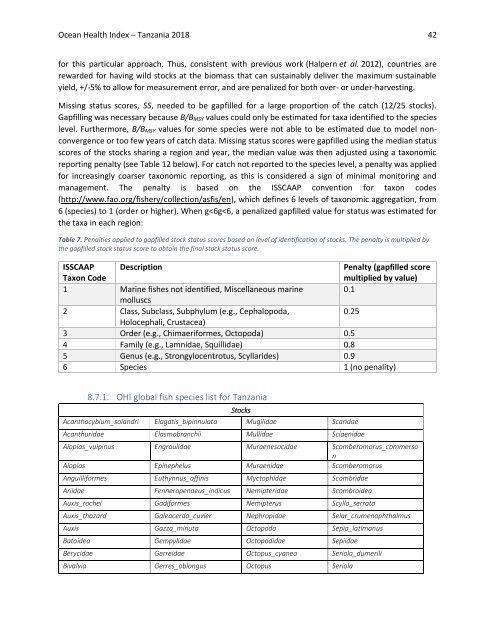OHI+ Tanzania_Technical Report_2018
You also want an ePaper? Increase the reach of your titles
YUMPU automatically turns print PDFs into web optimized ePapers that Google loves.
Ocean Health Index – <strong>Tanzania</strong> <strong>2018</strong> 42<br />
for this particular approach. Thus, consistent with previous work (Halpern et al. 2012), countries are<br />
rewarded for having wild stocks at the biomass that can sustainably deliver the maximum sustainable<br />
yield, +/-5% to allow for measurement error, and are penalized for both over- or under-harvesting.<br />
Missing status scores, SS, needed to be gapfilled for a large proportion of the catch (12/25 stocks).<br />
Gapfilling was necessary because B/B MSY values could only be estimated for taxa identified to the species<br />
level. Furthermore, B/B MSY values for some species were not able to be estimated due to model nonconvergence<br />
or too few years of catch data. Missing status scores were gapfilled using the median status<br />
scores of the stocks sharing a region and year, the median value was then adjusted using a taxonomic<br />
reporting penalty (see Table 12 below). For catch not reported to the species level, a penalty was applied<br />
for increasingly coarser taxonomic reporting, as this is considered a sign of minimal monitoring and<br />
management. The penalty is based on the ISSCAAP convention for taxon codes<br />
(http://www.fao.org/fishery/collection/asfis/en), which defines 6 levels of taxonomic aggregation, from<br />
6 (species) to 1 (order or higher). When g


















